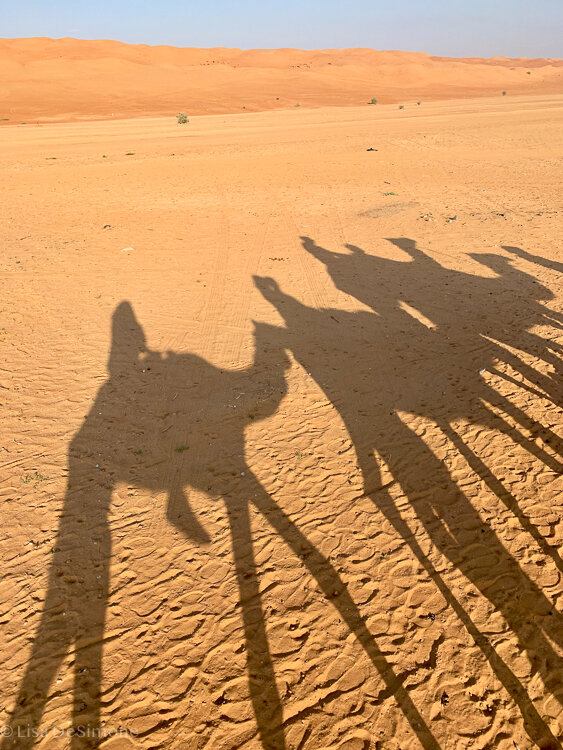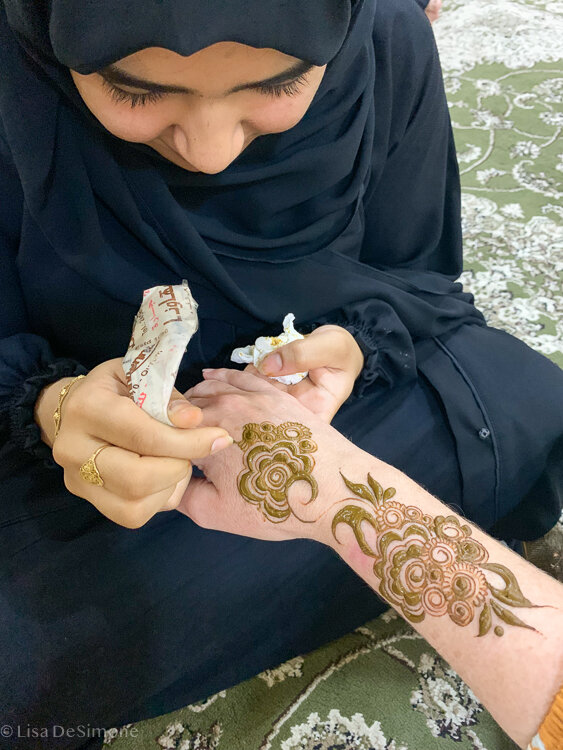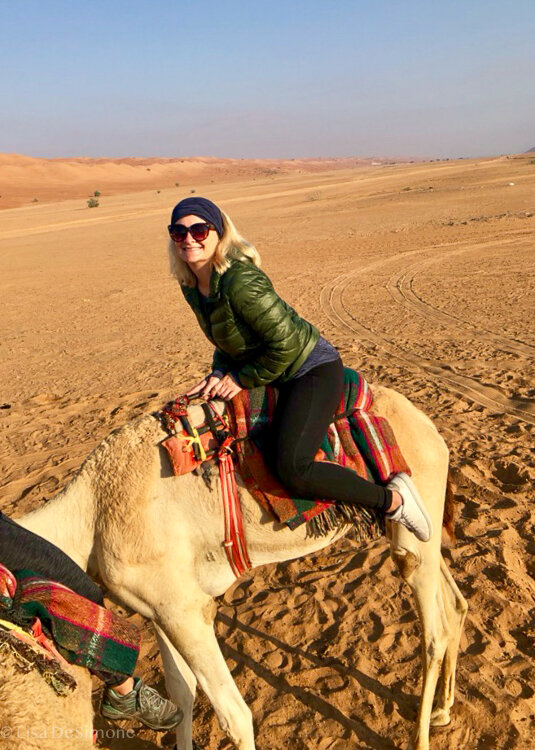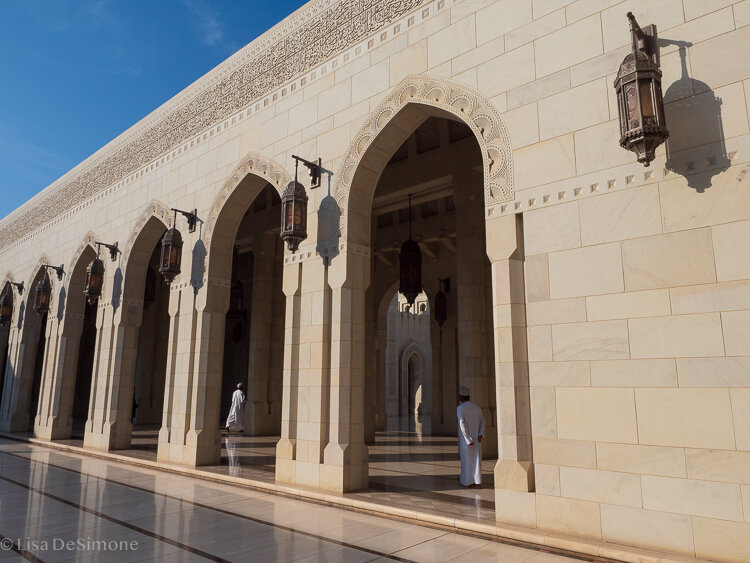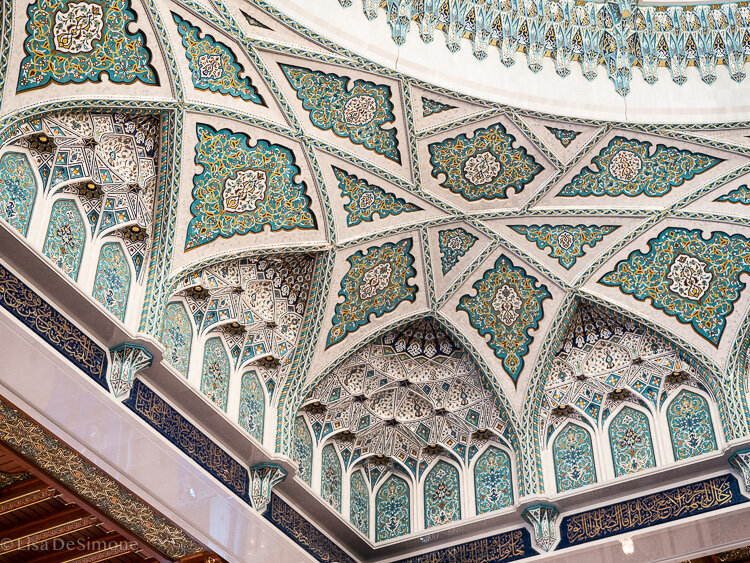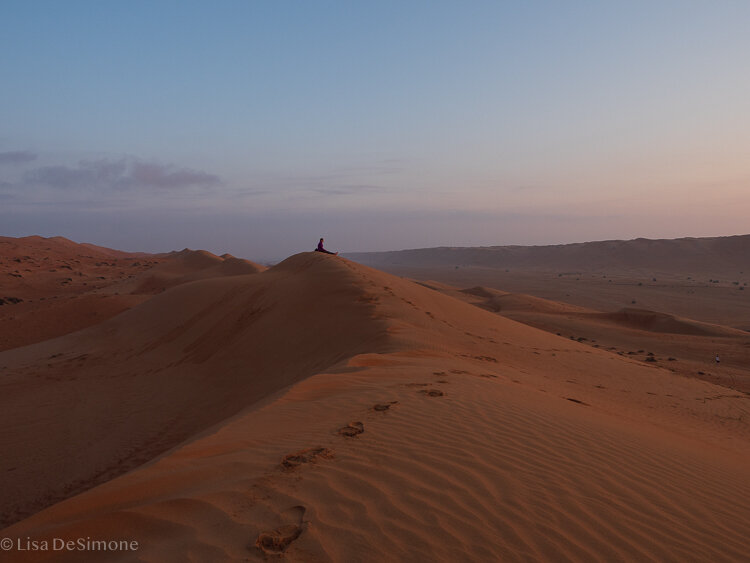Oman Road Trip: 10 Days Through a Wonderful & Diverse Country
/
Sunset in Wahiba Sands
When I told people I was going to Oman, many were confused. “Is that in Jordan?” they’d asking, thinking I was referring to Amman. And when I said that I was headed to Oman - the country - that didn’t ring many bells either. It seems that when it came to countries along the Arabian peninsula, Oman was relatively unknown.
When I further explained that it was “in the middle east, next to Saudi Arabia and Yemen, and across the gulf from Iran”, the next question was always “Is it safe there?”. After having spent 10 days on a road trip through this wonderful and diverse country, I can definitively say that Oman is incredibly safe and clean - and overall a great place to visit.
There seems to be an ongoing (and I think increasing) reluctance by many to visit Muslim countries and/or the Middle East. I believe that anyone who decides to paint all of the countries in this region with one broad brush stroke would really be missing out. Oman is a very safe, moderately conservative, lovely country and the Omani people are extremely kind, courteous and friendly.
I happened to be in Oman in January 2020 when President Trump decided to stir up the middle east, and many friends back home in the USA reached out to me to tell me to be safe. In all honesty, I never felt anything but safe in Oman, and frankly felt no different after President Trump’s actions than I did before them.
The diversity of activities possible in Oman during a short visit is impressive. I am not sure where else you can visit beautiful mosques, roam through ancient forts, shop in local souks, witness a goat market, snorkel with sea turtles, watch sunrise and sunset in the desert, swim in natural wadis (valleys), eat authentic and delicious food, and hike in the some spectacular mountains - all within a short driving distance.
Two friends and I rented a car and spent 10 days driving around Oman, and I have to say it was one of the most enjoyable road trips I have taken. The roads in Oman are very well maintained, and based on the amount of road construction we saw, it will likely only get easier to self drive there. All of the road signs were in English (which helps considerably), fuel was inexpensive on a relative basis, and between our rented GPS and Google Maps we never got lost.
i encourage you to discover Oman for yourself. Get yourself a 4WD vehicle and get ready for a great adventure.
ANDIAMO!
Feeling small at the “Grand Canyon” of Oman!
Below are the highlights of our road trip through Oman and some tips for traveling in this great country. The majority of visitors we came across were escorted by a local guide, but it’s super easy (and more convenient) to rent a car and self drive. If you want to really explore the country, renting a 4x4 is imperative as it is necessary for access to the desert and for navigating some of the steep mountain roads.
HOW MANY DAYS TO BUDGET IN OMAN
Our plan was to be in country for 10 days and we didn’t want to take any flights, so we chose to keep to what I would consider the classic Oman loop route - starting and ending in Muscat.
Day 1 - Muscat. Half day water excursion (jet lag recovery day :-)
Day 2 - Muscat. City tour with guide
Day 3 - Drove from Muscat to Nizwa, stopping at Al Jabal al Akhdar for the villages walk in the mountains
Day 4 - Day trip from Nizwa to Jebel Shams for the Balcony Walk
Day 5 - Explored Nizwa, then an afternoon drive to Al Ayn Beehives
Day 6 - Morning in Nizwa, then drove from Nizwa to Wahiba Sands
Day 7 - Relaxing day in Wahiba Sands
Day 8 - Drove from Wahiba Sands to Muscat, stopping at Wadi Bali Khalid
Day 9 - Day trip from Muscat to Wadi Shab and the Bimmah Sinkhole
Day 10 - Explored Muscat / relaxed at the hotel pool
I was happy with the amount of time we spent in each place, and wouldn’t change anything. If you were pressed for time you could reduce the trip to 7 days, skipping the first day’s water excursion, the extra day in Wahiba Sands and the last day in Muscat. Any less than 7 days and I think you’d miss some really good experiences. If you have more than 10 days, you could add in a day of SCUBA diving or a visit to Sur to see the turtles hatching (it was the wrong time of year for us, but that is a popular stop between Wahiba Sands and Muscat). Additionally, if you wanted to fly I understand it’s worth visiting Salalah in the south, which is supposed to be beautiful when it’s green.
WHEN TO VISIT OMAN
We arrived in Oman on December 29 and found the weather over the next 10 days to be nearly perfect. That said, we tried to plan the majority of our outdoor exploring in the mornings, to avoid excessive sun. The country only gets 4 inches of rain per year, so there’s no need to worry about a rainy season: what’s more important is the temperatures. During the summer, temps may exceed 50 degrees Celsius (122 degrees Fahrenheit) with very high humidity, so unless you have a real tolerance for heat, visiting outside of summer is recommended.
The view from Nizwa Fort of the date palm trees and mountains in the distance.
INTERNET CONNECTIVITY AND MOBILE PHONE ACCESS
Wifi was readily available at every hotel and many restaurants, so you won’t be without internet access during your time in Oman. I have an international plan through T-Mobile, my US based cell phone carrier, which gave me free data and free text messages throughout the country (if you travel a lot like I do, I highly recommend it). I had full strength on the local network in nearly all parts of Oman with no issues at all.
My friend purchased a local SIM card for her unlocked mobile phone, which also worked well (I recommend purchasing the SIM card at the airport). Additionally, we paid for a GPS with our rental car, and between all of that, we had perfect navigation and never got lost. Contrary to what you may read online, Google turn-by-turn directions were available in the country.
OUR DAY BY DAY ITINERARY
MUSCAT - 2 DAYS
We arrived in Muscat late at night, and budgeted the next two full days to explore the capital of Oman. Until the 1970’s, the land where the city of Muscat now sits was largely nothing more than small roads and date palms trees. The discovery of oil and the heralding in of Sultan Qaboos bin Said resulted in the creation of the thriving, modern city that exists today.
The geography of Muscat is rather unique: nestled between the Arabian sea and the mountains, the city had little room to expand during it’s growth period and now stretches for some 30 km alongside the sea. Aside from the promenade known as the Muttrah Corniche, Muscat is not a very walkable city. In fact, it was often a 25+ minute drive from one side of the city to the other.
Unlike other middle eastern cities such as Dubai or Abu Dhabi, however, Muscat is not full of skyscrapers and modern apartment buildings…it is clean, manicured and aesthetically pleasing - a city of mostly cream colored, low-rise buildings punctuated by minarets and mosque domes.
The Sultan Qaboos Grand Mosque is a must-see in Muscat.
Assuming we would be jet-lagged, we spent the better part of our first day in Muscat on the water, going on a Daymaniyat Islands Tour & Snorkeling trip. The water was crystal clear and warm and we snorkeled alongside sea turtles and plenty of colorful fish.
We hired a local guide (arranged via email in advance) for a city tour during our second full day in Muscat. I would highly recommend this approach, as a guide can provide a lot of historical context, as well as information on modern day Oman - plus the guide will also drive you from place to place which is very helpful. Our guide was Khalifa: he spoke excellent English and was very knowledgeable. I highly recommend him. He can be reached via email (kh_h_113@hotmail.com) or WhatsApp +96899232645.
The lovely and serene grounds of Sultan Qaboos Grand Mosque in Muscat, Oman.
For me, the Sultan Qaboos Grand Mosque was the highlight, so much so that I returned at the end of our trip for a second visit. The grounds are stunning - filled with courtyards of white marble and beautiful Arabic styled archways. It can be busy, but somehow still manages to feel peaceful.
It is hard to believe that this magnificent mosque, which was completed in 2001, took only 6 years to build. The main prayer hall can accommodate up to 20,000 people and houses both the largest rug in the world and an 8.5 ton chandelier dripping in Swarovski crystals! Some of the tile work inside and outside was impressive, reminding me of the many mosques I saw in Uzbekistan.
Travel tip: Non-Muslims are allowed to enter the mosque from Saturday to Thursday only between the hours of 8am and 11am. Try to arrive early to avoid the crowds and if possible try not to visit when cruise ships may be in town!
An important note is that there is a strict dress code when visiting the Sultan Qaboos Grand Mosque. Women must have their hair covered and clothes that reach the wrist and ankle (headscarves and robes are available to rent at the entrance.) Men must also cover their arms and legs.
The only real walkable part of Muscat is the Muttrah Corniche, a lovely promenade along the sea. Look for the the huge frankincense incense burner monument on the top of the hill overlooking the city, and see if you can spot the Sultan’s yachts in the harbor! During your walk, make sure to head into the Muttrah Souk, one of the oldest Arabian markets in the world. As is typical with other souks, there are narrow “streets” full of vendors selling everything from gold to frankincense to I LOVE OMAN keychains. It’s fairly touristy but fun to stroll through. Other places we visited in Muscat include the Bait Al-Zubare Museum and the Royal Opera house.
Where to Stay in Muscat
Every western hotel has a presence in Muscat, so it’s possible to find a hotel that will fit any budget. We stayed at the Sheraton, which was great: it had a nice outdoor pool and patio, as well as a huge breakfast buffet. That said, the hotel was located in the business district, which was not ideal. We had lunch at the new W Hotel, located within walking distance of the Royal Opera House. Very trendy and hip, it was fabulous and would be a great place to stay. Another luxury option with old world charm is the Ritz Carlton Al Buston.
Where to Eat in Muscat
Conveniently located near the Muttrah Souq, we had dinner at Bait Al Luban, an upscale restaurant serving traditional Omani cuisine. We also made our way out to Kargeen Cafe, a large, very popular restaurant with a good deal of outdoor seating in a lovely courtyard full of lanterns. Try the traditional Oman dish of shuwa - banana leaf wrapped lamb.
NIZWA AREA - 3 DAYS Al Jabal al Akhdar / Jebel Shams / Nizwa town / Al Ayn Beehives
After a few days in Muscat, we picked up our rental car and headed inland toward our hotel near Nizwa, making stops along the way. Nizwa is the perfect base for exploring Nizwa itself and for trips to the Jebel Akhdar mountain range.
The souks of Nizwa. Oman.
About 90 minutes away, our first stop was the ruins of Birkat Al Mouz. Billed as one of the most famous villages in ruins in the Sultanate, I had high expectations for this stop and unfortunately was a bit underwhelmed. What I did find interesting though, was the the old Falaj irrigation system that runs through the town, which is listed as a Unesco World heritage site.
Traveler tip: Birkat Al Mouz is at the bottom of the road that leads up to the mountains of Jebel Akhdar. There is a nice coffee shop on the main road near the parking lot, Alstromeria Cafe, which is great for a shot of caffeine, a sweet treat and a clean restroom.
From Birkat Al Mouz we followed the signs for Al Jabal Al Akhdar and the Anantara Al Jabal Al Akhdar Resort. This is where the road gets really steep - in fact, the government requires that you have a 4x4 to drive up Jebel Akhdar and there is a manned check point to ensure only the proper vehicles continue up the mountain. It is worth stopping at the Anantara Resort, as the views from the hotel overlook are simply amazing. In fact, if you want to indulge, I’d suggest you reserve a night in the resort! From the hotel we did the villages walk between Al Aqr and Al Ayn: it was an easy walk with amazing views and was a good way to stretch our legs.
Our goal for the next day was to visit Jebel Shams (aka the Mountain of Sun). From Nizwa it was a two hour drive on the main road up the mountain to the viewpoint where we gazed upon “Oman's Grand Canyon” (it’s near the Jebel Shams Resort with a large parking lot and a guardrail.) After stopping there we continued on an unpaved road about 10 minutes to the little 'village' of Khateem for the start of the Balcony Walk.
The Balcony Walk trail itself is well marked and runs the rim of a large canyon, affording some pretty amazing views! It took us 3 hours (out and back) and was full of beauty and grand vistas. I’d highly recommend this hike - it is moderate, although at times a bit narrow, but easily done in sneakers. It’s alway humbling seeing nature at it’s finest.
That’s me, in the bottom left corner, enjoying the majesty of nature along the Balcony Walk.
We spent our final day in the Nizwa area discovering the town of Nizwa itself and were lucky enough to be there on a Friday. I adore a local market, and the Friday livestock market in Nizwa is one of the most interesting I’ve seen.
Vendors come from all over the region to sell all kinds of goods in Nizwa, including livestock. The sellers parade their goats around a circle (think of a catwalk for goats!!) and announce their prices, allowing potential buyers to inspect the animals before purchase. There is plenty of pushing, shoving, shouting and smells!
The market has been conducted this way for centuries and despite the picture taking tourists like me, it is an authentic look into local life.
Traveler tip: Nizwa on a Friday is an amazing place - full of energy - so plan accordingly if possible. The market begins at 6:30 am and goes until around 9:30 am, but the parking lots get packed so plan to arrive early.
Aside from the Friday market, Nizwa is full of interesting sites. Make sure to visit the Nizwa Fort, Jibreen Castle and the souq. I particularly enjoyed the Nizwa souq because I found it to be less touristy than the souq in Muscat. Make sure to visit the building dedicated solely to dates: yum! Nizwa has a laid back vibe that I really liked and I would allocate at least a half day there.
To visit the fort itself and Jibreen Castle can take a few hours to explore (there are guided tours throughout the day and occasionally traditional song and dance in the main square) and the souq shops are fun to browse. Stop in the square, take a seat, and breath in the smell of frankincense that is everywhere. I would also recommend stopping for a coffee or a leisurely lunch at Nizwa Fort Coffee Shop.
Traditional music in the courtyard of Nizwa Fort.
In the afternoon we decided to drive out to the Al Ayn Beehive tombs. The group of necropolises that include Al Ayn, Bat and Al-Khutm form the archeological sites that have achieved UNESCO World Heritage Site status due to their importance to Omani history. Not much is known about these ‘beehive tombs’ (the name is based on their shape) except that they were constructed between 2000 and 3000 BC and are thought to have protected the remains of up to 200 people.
Where to stay in Nizwa:
The options in/near Nizwa weren’t great when we researched online. We stayed at Nizwa Hotel Apartment, which was a 20 minute drive from Nizwa town. The apartments were large and very clean, and the staff were kind and helpful, but I would have preferred to stay closer to Nizwa.
Where to Eat in Nizwa
Because we were outside of town, it wasn’t convenient to go into town for dinner. The one memorable meal in Nizwa we did have was at Marsa Alsaiyaad Fish and Seafood, right in Nizwa. At this restaurant you chose your actual fish from their ice case and they grill it up for you on the spot. It was incredibly fresh and very inexpensive. I highly recommend it.
WAHIBA SANDS - 2 DAYS
From Nizwa, we drove into the Arabian Desert. We spent two nights in Wahiba Sands, which is easily reached from Muscat or Nizwa in a few hours. In fact, we were able to self-drive right to our desert camp in our 4x4- after stopping to have our tires deflated, that is! Many desert camps offer activities such as camel rides, quad biking, dune bashing, etc. We chose to keep it very low key during our 2 days in the desert: we spent time walking the dunes, relaxing and reading, and only did a short camel ride and sunset on the dunes. Being in the desert is magical.
Wahiba sands, oman
Where to stay in Wahiba Sands:
Spending a night in the desert at one of the more upscale camps comes at a price, but if you have never spent the night in the desert, I highly recommend it. We stayed for 2 nights at Desert Nights Camp. The camp is located 12 km from the main road, and is accessible with a 4x4. It was larger than other desert camps I stayed at in Morocco and, as such, was a much less personalized experience. Desert Nights Camp was all inclusive (B&D included) and the food selection and quality were good. To save some money you could easily stay for only one night, though I would recommend getting there early in the afternoon to ensure you are there for sunset.
MUSCAT - 3 DAYS Wadi Bani Khalid / Wadi Shab / Bimmah Sinkhole
From the desert we decided to head back to Muscat, stopping at Wadi Bani Khalid. A wadi is a valley or ravine, sometime filled with water. Wadi Bani Khalid has various pools of naturally warm, clear water and is one of the best wadis in Oman for swimming. There is a large car park at the end of the road leading to Wadi Bani Khalid and it’s only a 10 minute walk from the car park to the natural pools.
This wadi has been made more accessible by the addition of some cement walkways and stairs, and there is even a restaurant on site and restrooms. That said, it didn’t feel overly artificial to me and was a fun place to spend a few hours.
Travel tip: Wadi Bani Khalid is very popular with tourists and locals alike and was pretty crowded when we were there. Conservative swimwear is required – women should bring a top and shorts to cover swimsuits and bikinis. There are signs everywhere indicating this: don’t be that person taking selfies half naked!
The next day we drove back south from Muscat about two hours, heading to Wadi Shab. Unfortunately for us, the day was overcast and a bit cool, so swimming in the actual wadi wasn’t as enjoyable as it was the day before - but it was still beautiful.
This link from Follow Me Away provides all the practical information you will need about Wadi Shab. I would underscore an important piece of advice in their post: wear the proper shoes to walk to the actual wadi. Unlike Wadi Bani Khalid, getting to Wadi Shab is more of a hike than a stroll and takes a good 45 minutes.
On the road back from Wadi Shab to Muscat we stopped at Bimmah Sinkhole. I was expecting something more special than a large depression filled with blue water surrounded by a fence and concrete stairs. To me, it was just okay and the general consensus among the three of us was that we wouldn't recommend going all the way just to see it.












